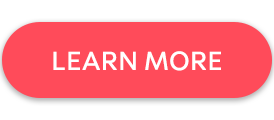
Innovation has been a driving factor in our society from the very beginning. Ever since humans first made stone tools for carving, our world has been driven by innovating the “new.” 150 years ago, business leaders were often quoted that “everything that could be invented has been.” As we recharge our smart phones and watch private companies lift off into outer space, it is clear this thought is far from true.
For companies that focus on innovation, it is not only new ideas that drive their business, but also new tools that help to transform these ideas into working prototypes that help them achieve ongoing success.
For thousands of years it has been the pen and paper that has stood out as the primary tool for visualizing innovative concept in prototype form. While writing instruments have unlimited capabilities in the 2D medium, in the end, the sum of their parts as a tool is limiting. Drawings, designs and sketches are by their nature restrictive and passive in scope. They are flat, 2D and can only be described as “plans on paper” or blueprints.
We are very fortunate to live in a time when designers have more tools than ever to assist in the visualization of their inspiration. And there is one tool in particular whose full power is unleashed when specifically applied to the prototyping process.
I’m talking about 3D printing.
What is Permanence? Turning An Object From Passive to Active
Whether the concept of 3D printing is foreign or familiar to you, there is no denying that this revolutionary technology by its very nature allows objects to transition from concept to permanence. And this is a key factor when applied to the prototyping process. So what is “permanence” and why is it important?
Permanence is the metamorphosis of an object, concept or expression from the 2D to the 3D. And what comes with permanence is not just the ability to visually see an object from multiple angles. Its major ontological impact is that an object with permanence is experienced actively.
What this means is that a drawing, a cartoon or a doodle is viewed in a passive experience. Like a comic book or a movie, you see it, and then you look away. There is no interaction. There is no weight, no tactile contact, no long-term interaction with the observer.

But an object with permanence is transformed into an active
experience. It is in three dimensions of space. It has weight, it has tactile integration.
And this emotional connection is key to the prototyping process.
With a 3D object, the observer can experience it in
countless ways that a passive drawing does not permit. How will gravity effect
it? What does it feel like? How does it look on a shelf with other objects when
moved from point A to point B?
Our 3D printing solutions allow design firms to generate a new design into a fully-rendered concept that one can hold, touch and interact with, and provides not only permanence as noted above, but also creates a path to improvement and redesign that 2D drawings never can.
Holding a 3D printed prototype in your hand allows you to
examine its faults, advantages and perhaps even discover capabilities you
didn’t even know it had. No longer are you limited to viewing your blueprints
and imagining what a design would look like, the 3D printing revolution has now
given you the power to examine, refine and redesign your creation in a way
never before permitted.
Give Potential Customers An Experience, Not A Presentation
When designers are limited to presenting their ideas in a
passive way it maintains a passive presentation. Anyone that is reviewing your
design, invention or concept when looking at a drawing does not experience a
solid relationship with that prototype concept. They view it, and then they
turn away (or cease viewing it). A passive experience.

But when holding a 3D model of your prototype in their hand – that is an active experience. And the emotional connection this creates is exponentially greater in creating positive feelings and interest in said prototype.
Using 3D printing, you can now transform a prototype from passive to active. No longer is your audience limited to merely viewing your prototype. They are now experiencing it. A 3D object cannot be avoided or ignored or experienced passively. And the ability to prototype this way is a major advantage to 3D printing.
The Exact Part You Need
The advantages of 3D printing prototypes does not stop with helping to create permanence and an active experience.
In addition to making your design into an active experience,
3D printing also allows for trial and error in the real world. And it allows
for an exact transformation of your imagination into reality.
Often design firms are limited by “parts on hand” when
creating what is termed a “looks like” or even a “works like” prototype model.
But with the revolution of 3D printing, any part, angle or object needed to
accurately represent or even function like your creation is now accessible.
Gone are the days when a broom handle and a stack of glued-together poker chips are substituted for the exact design you have in mind. With the advent of 3D printing, a 1:1 duplicate of your mind’s creation can now exist. And because it is in 3D, all of the advantages of permanence and an active experience as described above are now infused in your prototype.
With the new tools and powers provided by 3D printing, prototyping has not only become easier, it leads to designs that are exact duplicates of your imagination. No longer does your audience need to interpret a drawing or experience your invention passively. Creating a “looks like” model is now replaced with “a model.”
And how amazing is that!
Want to learn more? We’re here to help with your prototyping needs.



